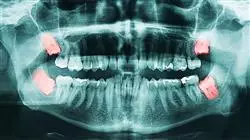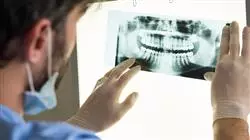University certificate
The world's largest faculty of dentistry”
Introduction to the Program
If you want to update your knowledge in the field of dentistry, don't hesitate any longer. At TECH we offer you the most complete specialization in the market to reach a higher level of professionalism"

Gingival and periodontal diseases are among the most common human diseases. Gingivitis affects approximately 50% of school-age children and more than 70% of the adult population has suffered from gingivitis, periodontitis or both. In addition, it is estimated that periodontitis is responsible for 30-35% of all tooth extractions, while caries and its sequelae account for 50%.
With these data, it is not surprising how important it is for dental professionals to have extensive knowledge in this field, since all surgery, no matter how small, must be carried out following certain protocols that are fundamental for the good short and long term results of the surgery.
It should also be noted that, in recent years, dentistry, and periodontics and osseointegration in particular, have undergone enormous changes, with an increase in the number of patients coming to dental clinics seeking treatments that restore optimal oral health conditions, not only from a functional but also from an esthetic point of view.
Throughout this specialization, the student will learn all of the current approaches to the different challenges posed by their profession. A high-level step that will become a process of improvement, not only on a professional level, but also on a personal level. We will not only take you through the theoretical knowledge, but we will show you another way of studying and learning, more organic, simpler and more efficient.
This Advanced master’s degree is designed to give you access to the specific knowledge of this discipline in an intensive and practical way. A great value for any professional. Furthermore, as it is a 100% online specialization, the student decides where and when to study. Without the restrictions of fixed timetables or having to move between classrooms, this course can be combined with work and family life.
A high level scientific training program, supported by advanced technological development and the teaching experience of the best professionals"
This Advanced master’s degree in Periodontics, Implantology and Oral Surgery contains the most comprehensive and up-to-date academic course on the university scene. The most important features of the program include:
- The latest technology in online teaching software
- A highly visual teaching system, supported by graphic and schematic contents that are easy to assimilate and understand
- Practical cases presented by practising experts
- State-of-the-art interactive video systems
- Teaching supported by remote training
- Continuous updating and retraining systems
- Self organised learning which makes the course completely compatible with other commitments
- Practical exercises for self-evaluation and learning verification.
- Support groups and educational synergies: Questions to the expert, discussion forums and knowledge
- Communication with the teacher and individual reflection work
- Content that is accessible from any, fixed or portable device with an Internet connection.
- The banks of complementary documentation are permanently available, even after the program has been completed.
This Advanced master’s degree may be the best investment you can make when choosing a refresher program for two reasons: in addition to updating your Dentistry knowledge, you will obtain a diploma from TECH Global University"
Our teaching staff is made up of working professionals. In this way, we ensure that we provide you with the up-to-date training we are aiming for. A multidisciplinary team of doctors with training and experience in different environments, who will develop the theoretical knowledge in an efficient way, but above all, they will bring their practical knowledge from their own experience to the course.
The efficiency of the methodological design of this Advanced master’s degree enhances the student's understanding of the Advanced master’s degreee. Developed by a multidisciplinary team of e-learning experts, it integrates the latest advances in educational technology. In this way, you will be able to study with a range of easy-to-use and versatile multimedia tools that will give you the necessary skills you need for your specialization.
The design of this program is based on Problem-Based Learning, an approach that conceives learning as a highly practical process. To achieve this remotely, we will use telepractice learning. With the help of an innovative interactive video system, and learning from an expert, you will be able to acquire the knowledge as if you were actually dealing with the scenario you are learning about. A concept that will allow you to integrate and fix learning in a more realistic and permanent way.
A training program created for professionals who aspire to excellence that will allow you to acquire new skills and strategies in a smooth and effective way"

We offer you the best specialization of the moment so that you can carry out a deep study in this field, in such a way that you will be able to develop your profession with total guarantees of success"
Why study at TECH?
TECH is the world’s largest online university. With an impressive catalog of more than 14,000 university programs available in 11 languages, it is positioned as a leader in employability, with a 99% job placement rate. In addition, it relies on an enormous faculty of more than 6,000 professors of the highest international renown.

Study at the world's largest online university and guarantee your professional success. The future starts at TECH”
The world’s best online university according to FORBES
The prestigious Forbes magazine, specialized in business and finance, has highlighted TECH as “the world's best online university” This is what they have recently stated in an article in their digital edition in which they echo the success story of this institution, “thanks to the academic offer it provides, the selection of its teaching staff, and an innovative learning method aimed at educating the professionals of the future”
A revolutionary study method, a cutting-edge faculty and a practical focus: the key to TECH's success.
The most complete study plans on the university scene
TECH offers the most complete study plans on the university scene, with syllabuses that cover fundamental concepts and, at the same time, the main scientific advances in their specific scientific areas. In addition, these programs are continuously being updated to guarantee students the academic vanguard and the most in-demand professional skills. In this way, the university's qualifications provide its graduates with a significant advantage to propel their careers to success.
TECH offers the most comprehensive and intensive study plans on the current university scene.
A world-class teaching staff
TECH's teaching staff is made up of more than 6,000 professors with the highest international recognition. Professors, researchers and top executives of multinational companies, including Isaiah Covington, performance coach of the Boston Celtics; Magda Romanska, principal investigator at Harvard MetaLAB; Ignacio Wistumba, chairman of the department of translational molecular pathology at MD Anderson Cancer Center; and D.W. Pine, creative director of TIME magazine, among others.
Internationally renowned experts, specialized in different branches of Health, Technology, Communication and Business, form part of the TECH faculty.
A unique learning method
TECH is the first university to use Relearning in all its programs. It is the best online learning methodology, accredited with international teaching quality certifications, provided by prestigious educational agencies. In addition, this disruptive educational model is complemented with the “Case Method”, thereby setting up a unique online teaching strategy. Innovative teaching resources are also implemented, including detailed videos, infographics and interactive summaries.
TECH combines Relearning and the Case Method in all its university programs to guarantee excellent theoretical and practical learning, studying whenever and wherever you want.
The world's largest online university
TECH is the world’s largest online university. We are the largest educational institution, with the best and widest online educational catalog, one hundred percent online and covering the vast majority of areas of knowledge. We offer a large selection of our own degrees and accredited online undergraduate and postgraduate degrees. In total, more than 14,000 university degrees, in eleven different languages, make us the largest educational largest in the world.
TECH has the world's most extensive catalog of academic and official programs, available in more than 11 languages.
Google Premier Partner
The American technology giant has awarded TECH the Google Google Premier Partner badge. This award, which is only available to 3% of the world's companies, highlights the efficient, flexible and tailored experience that this university provides to students. The recognition as a Google Premier Partner not only accredits the maximum rigor, performance and investment in TECH's digital infrastructures, but also places this university as one of the world's leading technology companies.
Google has positioned TECH in the top 3% of the world's most important technology companies by awarding it its Google Premier Partner badge.
The official online university of the NBA
TECH is the official online university of the NBA. Thanks to our agreement with the biggest league in basketball, we offer our students exclusive university programs, as well as a wide variety of educational resources focused on the business of the league and other areas of the sports industry. Each program is made up of a uniquely designed syllabus and features exceptional guest hosts: professionals with a distinguished sports background who will offer their expertise on the most relevant topics.
TECH has been selected by the NBA, the world's top basketball league, as its official online university.
The top-rated university by its students
Students have positioned TECH as the world's top-rated university on the main review websites, with a highest rating of 4.9 out of 5, obtained from more than 1,000 reviews. These results consolidate TECH as the benchmark university institution at an international level, reflecting the excellence and positive impact of its educational model.” reflecting the excellence and positive impact of its educational model.”
TECH is the world’s top-rated university by its students.
Leaders in employability
TECH has managed to become the leading university in employability. 99% of its students obtain jobs in the academic field they have studied, within one year of completing any of the university's programs. A similar number achieve immediate career enhancement. All this thanks to a study methodology that bases its effectiveness on the acquisition of practical skills, which are absolutely necessary for professional development.
99% of TECH graduates find a job within a year of completing their studies.
Advanced Master's Degree in Periodontics, Implant Dentistry and Oral Surgery
Gingival and periodontal diseases are among the most common conditions in the dental office. Since more and more people require medical assistance in order to treat these conditions, it is essential to have specialized dental personnel. At TECH Global University we have developed this Advanced Master's Degree in Periodontics, Implantology and Oral Surgery, a program designed to offer you a complete training on the latest methods and technologies in this field. In this way, you will acquire the conceptual background and the most specialized technical skills and you will offer more specific treatments to each patient.
Specialize in the largest Faculty of Dentistry
Our Advanced Master's Degree will enable you to assist in the different areas of periodontics, implant dentistry and oral surgery. You will be able to review the macroscopic and microscopic anatomy of the periodontium, as well as the jaws and related tissues in order to make a diagnosis and determine the optimal treatment in each case. You will also study in detail the pathologies that can affect this area and the most appropriate form of intervention, always using the laser as an ally in these procedures. Likewise, you will be accompanied by experts in the area who will guide your studies and promote the exploration of your capabilities based on the best didactic material and the study of real clinical cases. This training will promote the growth of your professional career and will guide you towards a better working future.







